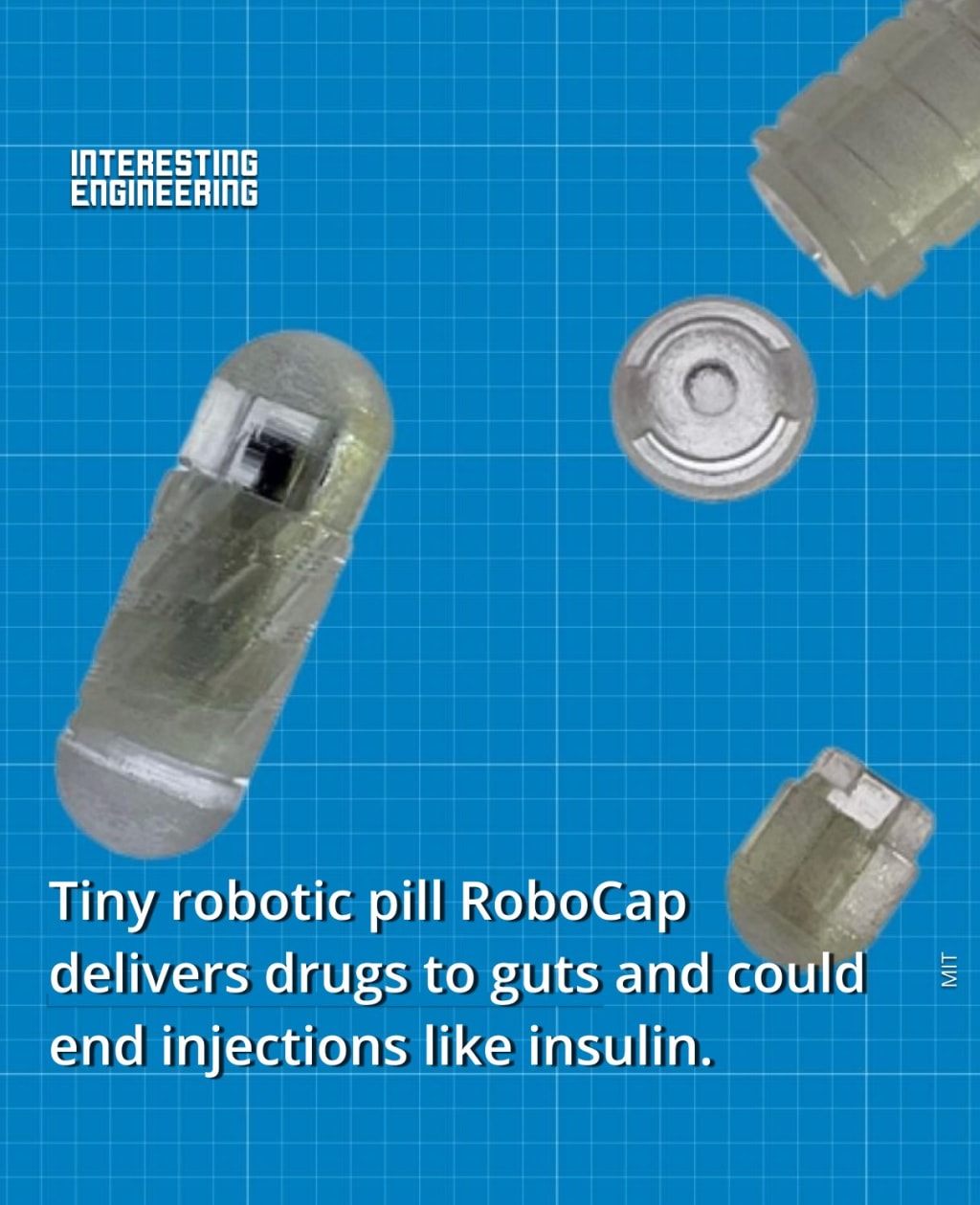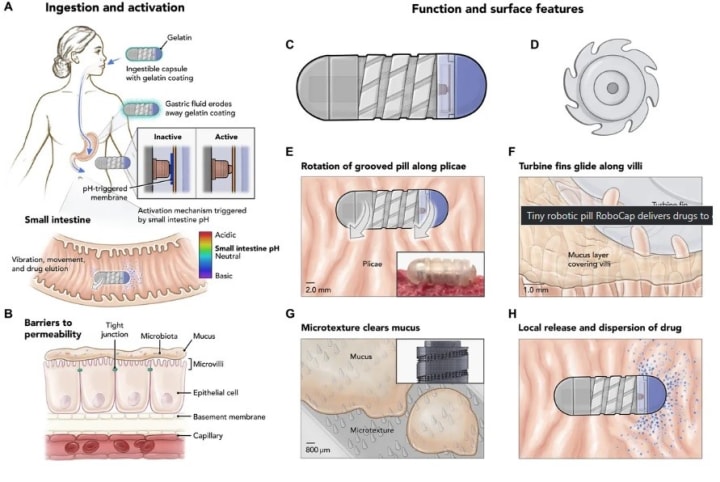Tiny Robotic pill RoboCap Delivers Drugs to Guts and Could end Injections Like Insulin
RoboCap is on a mission.

Devices produced for human health continue to make our lives easier. For this purpose, Massachusetts Institute of Technology (MIT) researchers aim to finish insulin injections by producing a robotic capsule.
Normally, large protein drugs cannot be given orally because they cannot cross our mucus barrier. This means that insulin and most other "biologic drugs" — drugs consisting of proteins or nucleic acids — have to be injected or administered in a hospital, as stated in the press release.
Published in Science Robotics on September 28, the study indicates that this newly developed weensy pill - named "RoboCap" - could toll the death knell for injections by spinning and tunneling through the mucus barrier and when it reaches the small intestine, allowing drugs carried by the capsule to pass into cells lining the intestine.

"By displacing the mucus, we can maximize the dispersion of the drug within a local area and enhance the absorption of both small molecules and macromolecules," says Giovanni Traverso, the Karl van Tassel Career Development Assistant Professor of Mechanical Engineering at MIT and a gastroenterologist at Brigham and Women's Hospital.
Overcoming to obstacles
The originator of RoboCap is Shriya Srinivasana, a research affiliate at MIT's Koch Institute for Integrative Cancer Research and a junior fellow at the Society of Fellows at Harvard University, who is the lead author of the study.
Srinivasana proposed developing a protective capsule with a mechanism that can tunnel through mucus, similar to how tunnel boring machines drill into soil and rock.
"I thought that if we could tunnel through the mucus, then we could deposit the drug directly on the epithelium," she says. "The idea is that you would ingest this capsule, and the outer layer would dissolve in the digestive tract, exposing all these features that start to churn through the mucus and clear it."
Working principle is eye-popping
RoboCap, which is about the size of a multivitamin, contains the tunneling features in its main body and surface as well as the medicine payload in a small reservoir at one end. The gelatin coating on the capsule can be adjusted to disintegrate at a particular pH level.
A tiny motor within the RoboCap capsule begins spinning when the coating dissolves because of the pH change that results from this process. This movement aids the capsule's ability to burrow into the mucus and push it aside. Additionally, the capsule is covered in tiny protrusions that function like toothbrush bristles to remove mucus.
"What the RoboCap does is transiently displace the initial mucus barrier and then enhance absorption by maximizing the dispersion of the drug locally," Traverso says.
"By combining all of these elements, we're really maximizing our capacity to provide the optimal situation for the drug to be absorbed."
In experiments on animals, the researchers delivered insulin or vancomycin, a potent antibiotic with a long peptide that is used to treat a variety of infections, including those affecting orthopedic implants and skin infections.
The researchers also discovered that they could deliver 20 to 40 times more medication with the capsule than they could with a similar capsule without the tunneling mechanism. In addition, The researchers found no sign of inflammation or irritation in the digestive tract after the capsule passed through.
Abstract
Oral drug delivery of proteins is limited by the degradative environment of the gastrointestinal tract and poor absorption, requiring the parenteral administration of these drugs. Luminal mucus represents the initial steric and dynamic barrier to absorption. To overcome this barrier, we report the development of the RoboCap, an orally ingestible, robotic drug delivery capsule that locally clears the mucus layer, enhances luminal mixing, and topically deposits the drug payload in the small intestine to enhance drug absorption. RoboCap's mucus-clearing and churning movements are facilitated by an internal motor and by surface features that interact with small intestinal plicae circulares, villi, and mucus. Vancomycin (1.4 kilodaltons of glycopeptide) and insulin (5.8 kilodaltons of peptide) delivery mediated by RoboCap resulted in enhanced bioavailability 20- to 40-fold greater in ex vivo and in vivo swine models when compared with standard oral delivery (P < 0.05). Further, insulin delivery via the RoboCap resulted in therapeutic hypoglycemia, supporting its potential to facilitate oral delivery of drugs that are normally precluded by absorption limitations.
About the Creator
Enjoyed the story? Support the Creator.
Subscribe for free to receive all their stories in your feed. You could also pledge your support or give them a one-off tip, letting them know you appreciate their work.






Comments
There are no comments for this story
Be the first to respond and start the conversation.